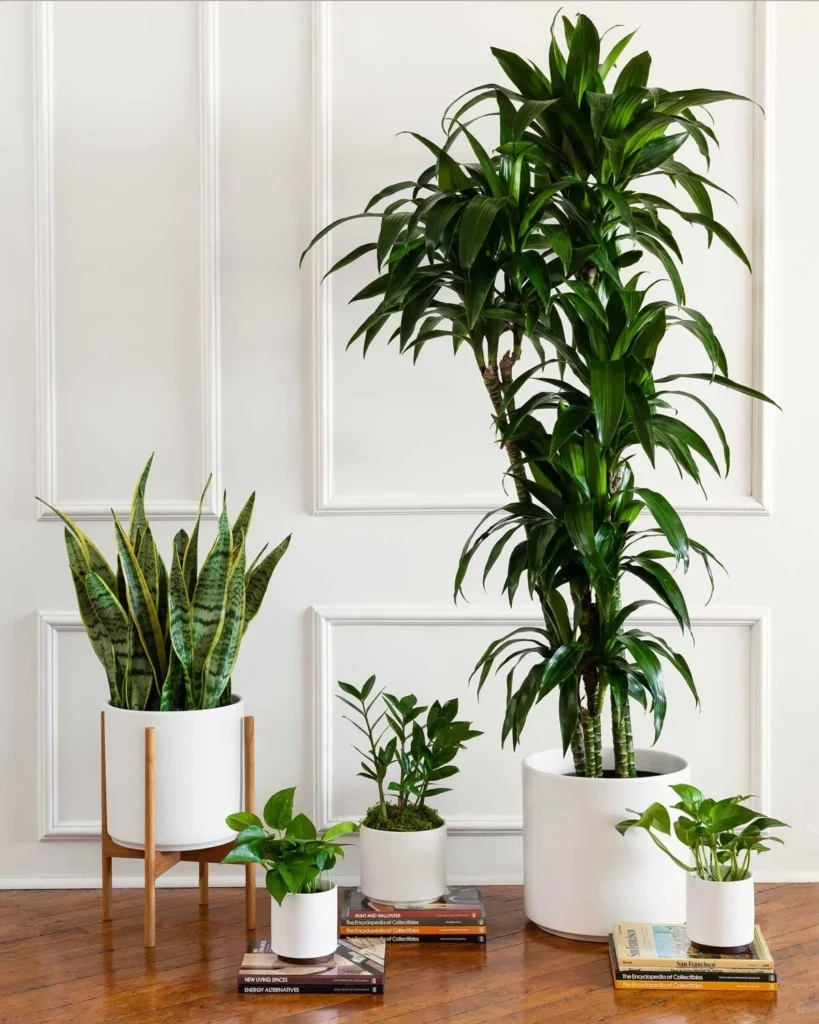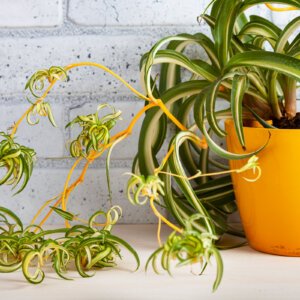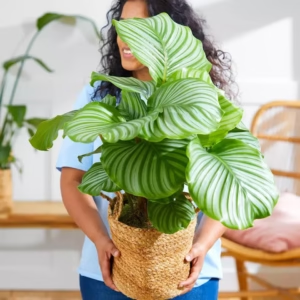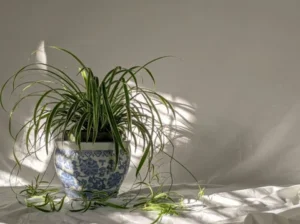Indoor plants are more than just beautiful additions to your living space – they are natural air purifiers. If you are looking for the best indoor plant that clean the air, you’ll be surprised by the number of plants that can improve your home’s air quality. These plants don’t just decorate your space, but they also reduce toxins, improve oxygen levels, and bring peace and relaxation into your daily life.
In this guide, we’ll cover the top air-purifying plants, their benefits, easy care tips, and which plants work best for each room in your home.
Visit Indoor Plant Helper for more guides on how to grow and care for your favorite plants.
Why Choose Indoor Plant That Clean the Air?
Indoor air can contain more pollutants than outdoor air. Everyday items such as paint, cleaning products, and synthetic furniture release harmful toxins into the air. Using an indoor plant that clean the air can naturally help with:
- Removing toxins like formaldehyde, benzene, and xylene.
- Boosting humidity levels for a fresher environment.
- Improving sleep and reducing stress.
- Enhancing productivity and mental health.
- Adding beauty and greenery to your home.
Top 10 Indoor Plants That Clean the Air
These plants are scientifically proven (including NASA’s Clean Air Study) to reduce air pollutants and make your home healthier.
1. Snake Plant (Sansevieria)
- Known as the Mother-in-Law’s Tongue.
- Removes formaldehyde and benzene effectively.
- Grows well in low light and requires little water.
- Releases oxygen even at night – perfect for bedrooms.
2. Peace Lily (Spathiphyllum)
- Famous for its elegant white flowers.
- Absorbs mold spores and reduces allergens.
- Removes harmful chemicals like VOCs (volatile organic compounds).
- Requires medium light and weekly watering.
3. Spider Plant (Chlorophytum comosum)
- Very easy to grow, ideal for beginners.
- Cleans carbon monoxide and xylene from indoor air.
- Child and pet-safe.
- Produces small offshoots (baby spider plants).
4. Aloe Vera
- Doubles as a healing plant with soothing gel inside its leaves.
- Absorbs benzene and formaldehyde from air.
- Thrives in bright indirect sunlight.
- Needs minimal water – perfect for busy people.
5. Areca Palm (Dypsis lutescens)
- Popular tropical indoor plant.
- Adds natural humidity to rooms.
- Cleans air of toluene and xylene.
- Needs bright, indirect light and regular watering.
6. Boston Fern (Nephrolepis exaltata)
- Acts as a natural humidifier.
- Absorbs mold spores and pollutants.
- Needs consistent watering and humidity.
- Best for bathrooms and kitchens.
7. Bamboo Palm (Chamaedorea seifrizii)
- Beautiful low-light plant.
- Removes benzene and trichloroethylene.
- Ideal for offices and living rooms.
- Needs moist soil and indirect sunlight.
8. Rubber Plant (Ficus elastica)
- Known for its large glossy leaves.
- Strong absorber of formaldehyde.
- Requires occasional pruning.
- Prefers bright light but can tolerate low light.
9. Dracaena
- Over 40 varieties to choose from.
- Removes benzene, formaldehyde, and trichloroethylene.
- Requires moderate care and indirect sunlight.
- Adds elegance to indoor spaces.
10. Pothos (Devil’s Ivy)
- Hardy trailing plant, great for shelves and hanging pots.
- Removes VOCs quickly.
- Thrives in both soil and water.
- Very low-maintenance – excellent for beginners.
Comparison Table: Best Indoor Plant That Clean the Air
| Indoor Plant | Best For | Care Level | Air-Cleaning Ability |
|---|---|---|---|
| Snake Plant | Bedroom, Office | Easy | Excellent |
| Peace Lily | Bedroom | Medium | Very High |
| Spider Plant | Living Room, Kitchen | Very Easy | High |
| Aloe Vera | Bedroom, Kitchen | Easy | High |
| Areca Palm | Living Room | Medium | High |
| Boston Fern | Humid Rooms | Moderate | Medium |
| Bamboo Palm | Low-Light Areas | Easy | High |
| Rubber Plant | Large Spaces | Easy | High |
| Dracaena | Office, Living Room | Medium | Very High |
| Pothos | Beginner Homes | Very Easy | High |
How to Care for Indoor Plants That Clean the Air
Light Requirements
- Most of these plants prefer indirect sunlight.
- Snake Plant and Pothos tolerate low-light conditions.
Watering Needs
- Avoid overwatering; most indoor plants dislike soggy soil.
- Aloe Vera and Snake Plant need minimal water.
- Peace Lily and Boston Fern require more frequent watering.
Temperature & Humidity
- Ideal range: 65–80°F (18–27°C).
- Ferns and palms thrive in higher humidity.
Placement Ideas
- Snake Plant → Bedroom (improves sleep).
- Peace Lily → Office (reduces stress).
- Spider Plant → Kitchen or study area.
- Areca Palm → Living room for a tropical vibe.
Benefits of Indoor Plants That Purify Air
- Reduce respiratory problems.
- Lower indoor air pollution levels.
- Increase oxygen and humidity.
- Reduce stress and anxiety.
- Boost focus, memory, and productivity.
Best Indoor Plant That Clean the Air for Each Room
Best for Bedroom
- Snake Plant
- Aloe Vera
- Peace Lily
Best for Living Room
- Areca Palm
- Rubber Plant
- Dracaena
Best for Office
- Spider Plant
- Pothos
- Bamboo Palm
Tips for Beginners
- Start with low-maintenance plants like Snake Plant, Spider Plant, or Pothos.
- Use pots with drainage holes to prevent root rot.
- Rotate plants every few weeks for even growth.
- Mist humidity-loving plants like Boston Ferns regularly.
Eco-Friendly Living
Choosing an indoor plant that clean the air is also a step toward sustainability. They reduce the need for artificial air purifiers and make your home healthier in a natural way.
FAQs About Indoor Plant That Clean the Air
Q1: Do indoor plants really clean the air?
Yes. Studies (including NASA’s Clean Air Study) have proven that plants absorb toxins and improve air quality.
Q2: Which plant is the best for beginners?
Pothos, Snake Plant, and Spider Plant are the easiest to maintain.
Q3: How many indoor plants do I need for a room?
About 2–3 medium plants per 100 square feet is effective for noticeable results.
Q4: Which plants release oxygen at night?
Snake Plant and Aloe Vera are the best nighttime oxygen producers.
Q5: Can indoor plants replace air purifiers?
While plants improve air quality, they work best when combined with good ventilation and hygiene.
Final Thoughts
Adding an indoor plant that clean the air is one of the simplest and most natural ways to improve your home environment. Whether you choose a Snake Plant for your bedroom, a Peace Lily for your office, or a Pothos for your living room, these plants will beautify your space and make your air fresher.
Discover more tips and detailed plant care guides at Indoor Plant Helper.





